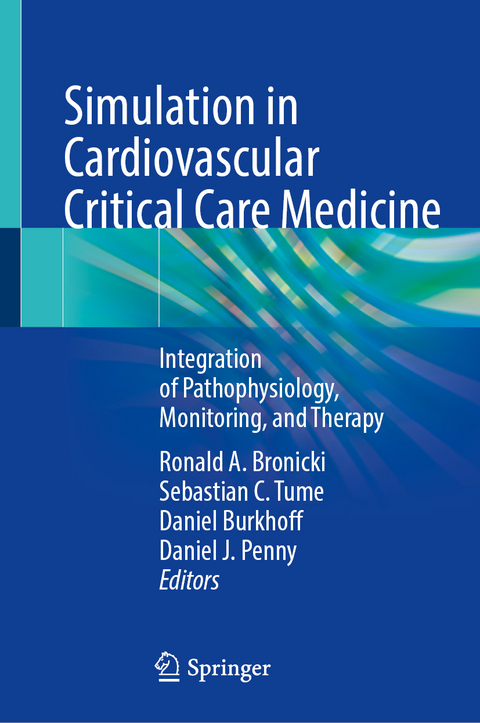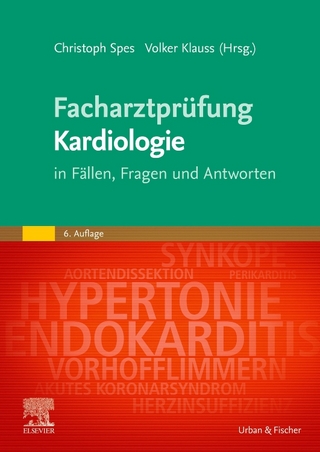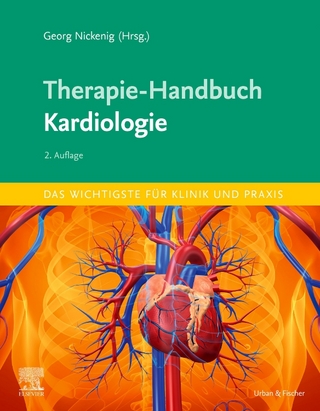
Simulation in Cardiovascular Critical Care Medicine
Springer International Publishing (Verlag)
978-3-031-63556-4 (ISBN)
This book uses a validated cardiovascular simulator to illustrate cardiovascular physiology and pathophysiology, principles of hemodynamic monitoring, and the impact of therapy in patients with a wide spectrum of critical care diseases. The simulator considers the closed-loop nature of the cardiovascular system and is thus ideally suited for demonstrating the complex and dynamic nature of the cardiovascular system.
The book uses the Harvi cardiovascular simulator (Harvi Dynamics, Inc) in which heart chambers are modeled according to the time-varying elastance principles of Suga and Sunagawa, and Guyton's model of the vasculature, which describes systemic and pulmonary vascular properties by a series of resistances and capacitances. The simulator generates ventricular pressure-volume loops from each of the four chambers, time-dependent tracings of pressure, flow and volumes, and the hemodynamic parameters derived from these signals. The principles of the time varying elastance model are reviewed and then applied to a spectrum of cardiovascular lesions, including acute and chronic systolic heart failure, sepsis phenotypes, pulmonary hypertension, valvular disease, and the impact of therapies such as vasoactive agents and acute and chronic mechanical circulatory support devices.
Simulation in Cardiovascular Critical Care Medicine is a valuable resource for all levels of learners in the fields of Cardiology, Critical Care Medicine, and Cardiac Critical Care Medicine.
Ronald A. Bronicki, MD Texas Children's Hospital Baylor College of Medicine Department of Pediatrics Houston, TX USA Daniel Burkhoff, MD, PhD Columbia University Associate Professor of Medicine New York, NY USA Sebastian Tume, MD Texas Children's Hospital Baylor College of Medicine Department of Pediatrics Houston, TX USA
Chapter 1: Introduction on CV physiology and pathophysiology using the ventricular pressure volume relation and time varying elastance model.- Chapter 2: Review of hemodynamic monitoring & vasoactive agents.- Chatper 3: Simulation generated clinical vignette on cardiogenic shock.- Chapter 4: Simulation generated clinical vignette on mechanical circulatory support.- Chapter 5: Simulation generated clinical vignetted on cardiomyopathies.- Chapter 6: Review of ventricular response to a volume load followed by simulation generated clinical vignettes on aortic and mitral regurgitations (acute, chronic compensated and chronic decompensated states).- Chapter 7: Review of ventricular response to a pressure load followed by simulation generated clinical vignettes on systemic & pulmonary hypertension and aortic stenosis (acute, chronic compensated and decompensated states).- Chapter 8: Heart Lung interactions: underlying principles and simulation generated vignettes on diastolic and systolic heart failure.
| Erscheinungsdatum | 17.10.2024 |
|---|---|
| Zusatzinfo | XIV, 174 p. 98 illus., 97 illus. in color. |
| Verlagsort | Cham |
| Sprache | englisch |
| Maße | 155 x 235 mm |
| Themenwelt | Medizinische Fachgebiete ► Innere Medizin ► Kardiologie / Angiologie |
| Schlagworte | Cardiovascular • closed-loop system • Heart Failure • hemodynamic monitoring • Mechanical Circulatory Support • physiology and pathophysiology • Simulator • Therapeutic Effects • Vasoactive agents • Ventricular response to pressure laod • Ventricular response to volume load |
| ISBN-10 | 3-031-63556-6 / 3031635566 |
| ISBN-13 | 978-3-031-63556-4 / 9783031635564 |
| Zustand | Neuware |
| Haben Sie eine Frage zum Produkt? |
aus dem Bereich


